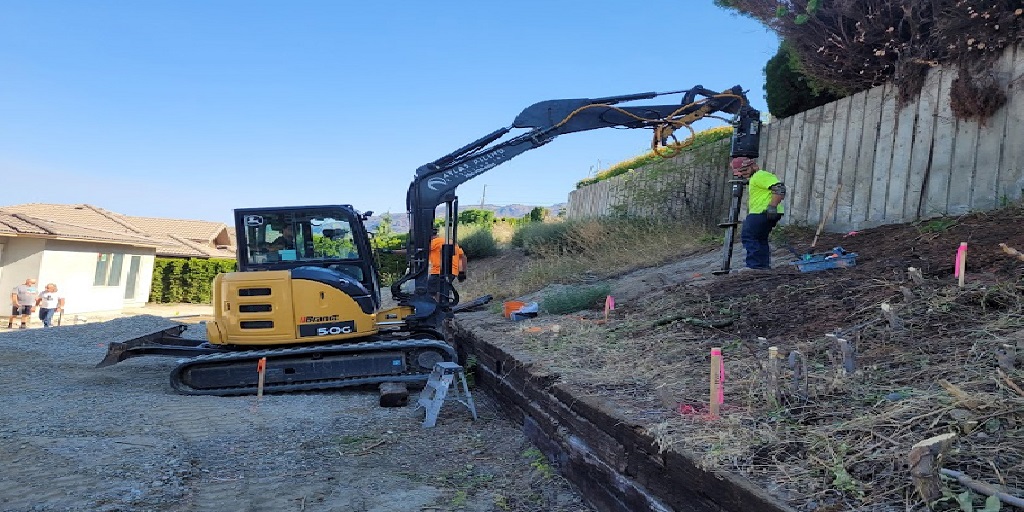
Sloped construction sites can be a developer’s nightmare. From design adjustments to structural concerns, building on uneven terrain introduces complex engineering challenges and can significantly inflate project costs. The default response—cutting into the slope, hauling in backfill, and installing retaining walls—often creates more work, more risk, and more expense. But there’s a smarter, more streamlined solution: helical pile installation.
This method is changing how builders approach hillside and sloped terrain, helping them avoid the disruption of excavation-heavy site prep while still achieving secure, long-lasting foundations.
Why Traditional Slope Stabilization Slows Down Projects
When faced with a sloped or uneven site, many construction teams are forced to spend valuable time reshaping the land to accommodate standard foundation methods. That usually involves excavation to level the ground, pouring concrete footings, and building retaining walls to keep soil in place—all of which require additional permits, inspections, and weather-sensitive timelines.
This conventional approach can drag projects out for weeks, if not months. Worse, it introduces long-term maintenance liabilities. Retaining walls can shift, crack, or erode over time, especially if the drainage is inadequate or the soil conditions fluctuate with seasonal moisture changes.
Builders looking to avoid these pitfalls are increasingly turning to helical pile installation as a way to stabilize sloped sites from below—without having to alter the slope at all.
Building With the Terrain, Not Against It
Helical pile installation allows builders to adapt to challenging topography rather than fight it. On loped lots where elevation changes are unavoidable, piles can be installed to varying depths to match the contour of the land. This flexibility enables a uniform, stable foundation across uneven ground without major grading or backfilling.
Each pile is placed precisely where needed, and elevation changes are easily accommodated by adjusting the length and angle of installation. That means no overdesigning, no soil hauling, and no reliance on retaining walls to force the land into submission. The piles themselves serve as deep anchors that stabilize the structure naturally, transferring load to competent soil or bedrock deep below the surface.
The result? A faster, cleaner, and more adaptable foundation method that works with the landscape rather than against it.
Keeping Your Timeline on Track
One of the biggest advantages of helical pile installation is its speed. There’s no need to wait for concrete to cure, and installation can usually be completed in days—not weeks. The process requires minimal heavy equipment and creates little disruption on site, allowing other trades to begin work sooner.
In regions where weather can be unpredictable or where the construction season is short, this is a significant advantage. Delays caused by rain-soaked soil or frozen ground can stall excavation or concrete work, but helical piles can often be installed in a wider range of conditions with less downtime.
That means faster timelines, more predictable schedules, and lower labor costs—without compromising structural integrity.
Long-Term Performance Without the Maintenance Headaches
Unlike retaining walls, which require regular inspection and upkeep, helical pile installation is virtually maintenance-free once completed. The piles resist frost heave, seasonal soil movement, and erosion over time. This is especially beneficial for sloped sites, where drainage and shifting soils pose ongoing risks to traditional foundations.
By anchoring the structure deep into stable ground, helical piles provide lasting support—even as the surface soil conditions continue to change. It’s a solution built for long-term stability and peace of mind.


